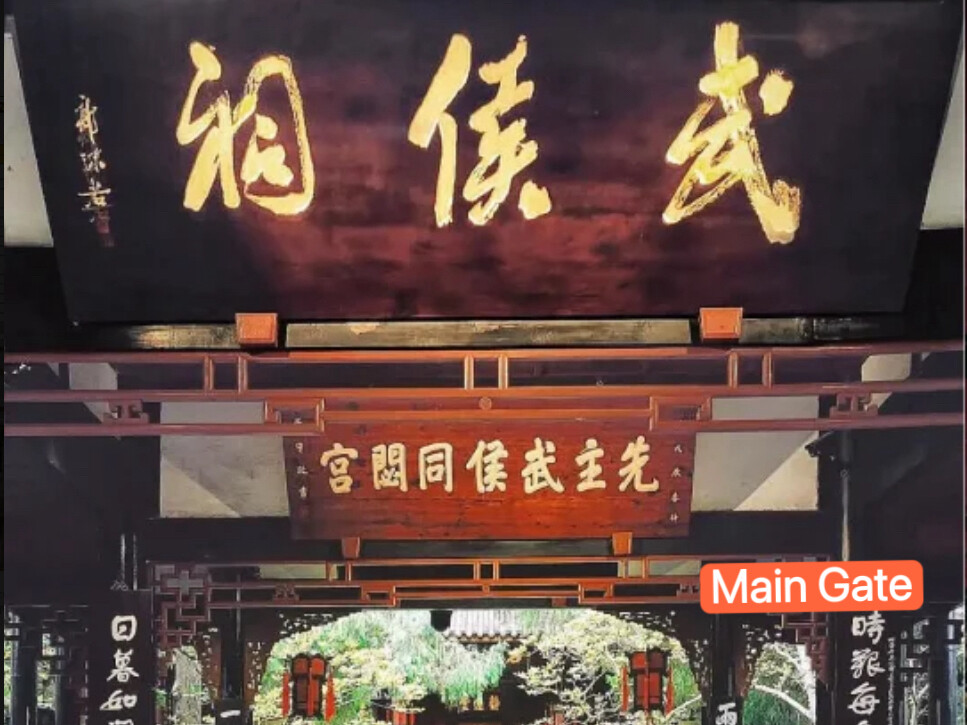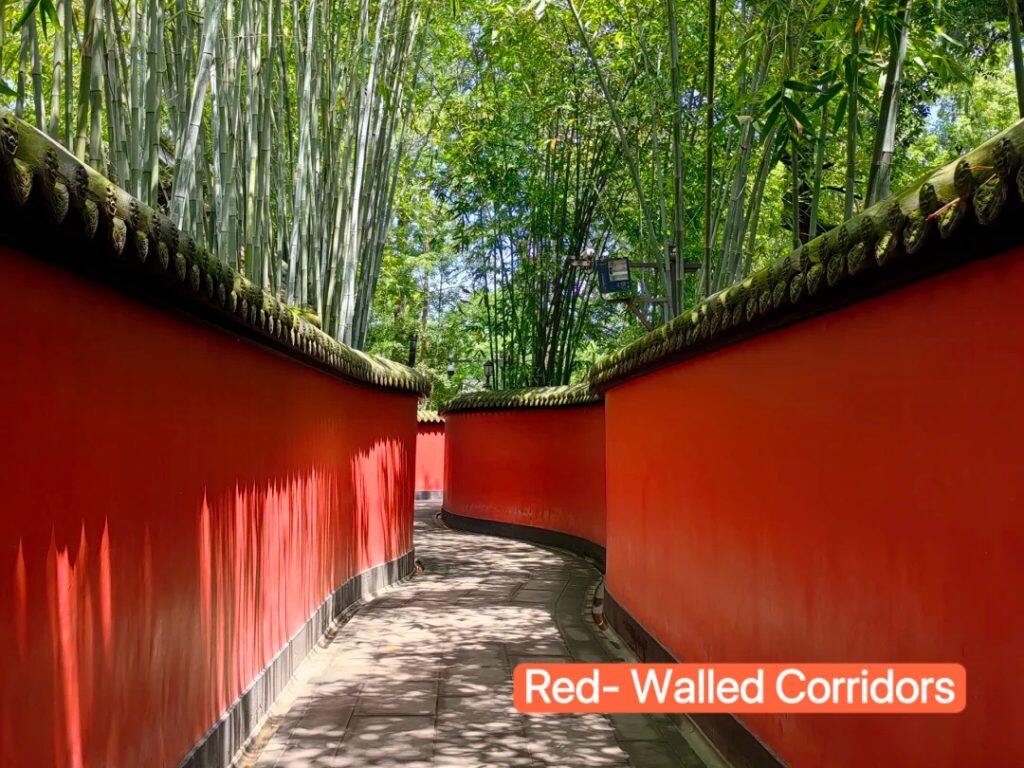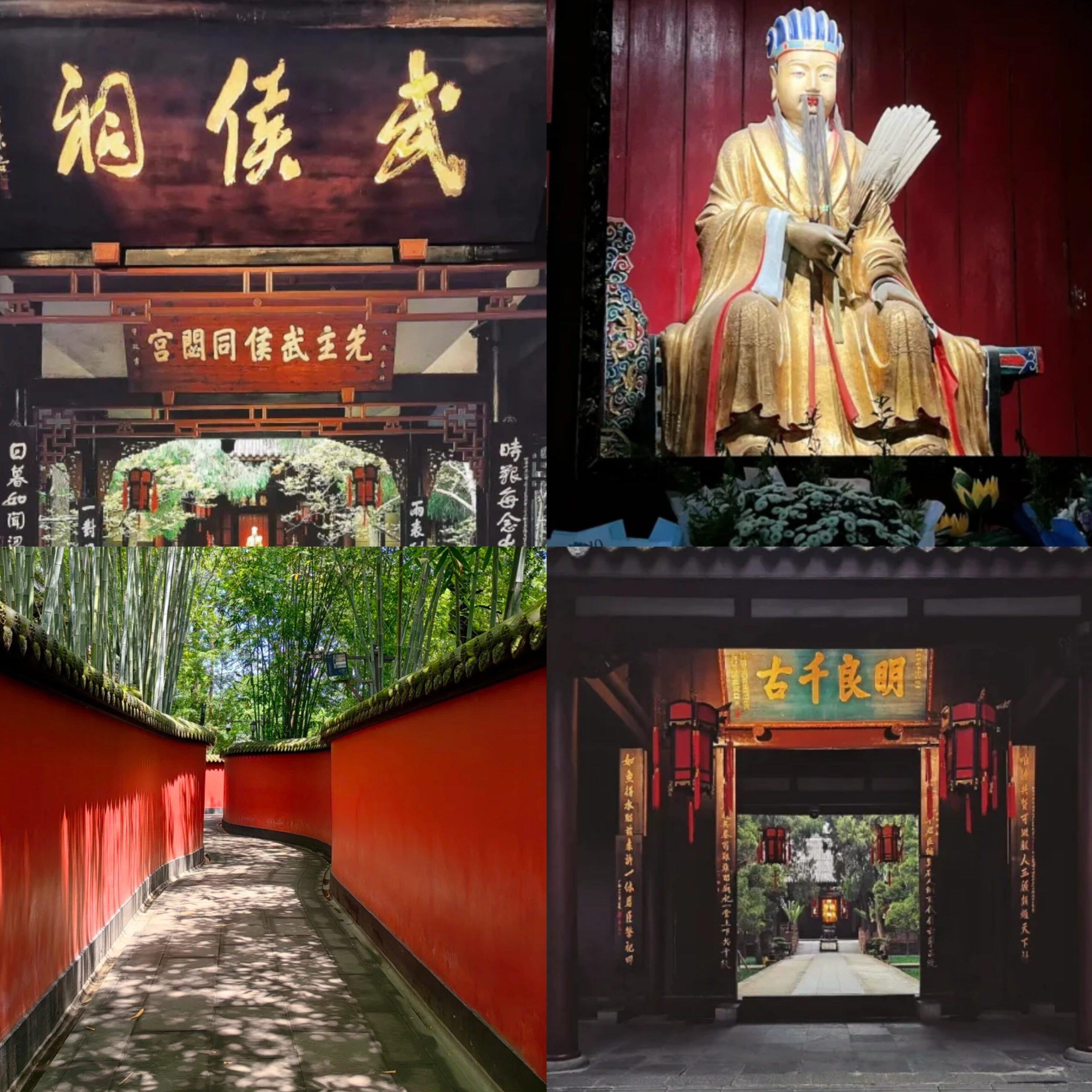Hello, I’m Mike Wang, a China travel expert with over 20 years of experience. During these two decades, I’ve traveled extensively around the world.This guide walks you through Chengdu Wuhou Shrine, a renowned historical site in China honoring Zhuge Liang. I’ll share its long history, serene scenes, and practical travel tips to help you plan a great visit.
Introduction
Chengdu Wuhou Shrine, a cherished cultural landmark in Chengdu, Sichuan Province in China, is dedicated to Zhuge Liang, a legendary strategist from the Three Kingdoms era. With a history spanning over 1,700 years, it’s a rare well-preserved site that honors ancient Chinese historical figures.
Covering around 150,000 square meters, the complex blends traditional Chinese architecture—with symmetric layouts, wooden structures, and serene courtyards. Key areas include the Main Gate, Zhuge Liang Hall (showcasing his relics), and the Three Kingdoms Museum (displaying artifacts from 220-280 AD).
Tickets & Opening Hours
Opening Hours:
- May 1 – October 31: 8:30 AM – 7:00 PM (last entry at 6:00 PM)
- November 1 – April 30: 9:00 AM – 6:30 PM (last entry at 5:30 PM)
- Holidays: Usually open.
Ticket Prices:
- General Admission: 50 RMB (approx. $7 USD)
- Concession (students, seniors 60-69): 25 RMB (approx. $3.5 USD). Valid ID required.
- Free Entry: Children under 1.2m, seniors 70+, disabled visitors, military personnel.
Purchasing Tickets & Payment Methods:
Tip: Bring your passport or ID for discounts and verification.
Online Booking: Highly recommended. About 70% of visitors buy tickets online. Book via the official WeChat account ( “Chengdu Wuhou Shrine”) or travel apps like Ctrip. You’ll get a QR code for entry.
On-site Purchase: Tickets can be bought at the ticket window with cash or mobile pay (Alipay/WeChat Pay). While cash is accepted, mobile payment is very common and convenient in China.
Main Scenic Areas & Attractions
Main Gate:
As you enter through the Main Gate, you can feel the solemnity of this historical site. It was built in the traditional Chinese style, representing the grandeur of that era.

Liu Bei Hall:
Liu Bei was the founding emperor of the Shu – Han state in the Three Kingdoms period (220 – 280 AD). In this hall, there is a statue of Liu Bei, showing his dignity as an emperor. His story is full of twists and turns. He started from a humble background, gathered a group of loyal followers like Zhuge Liang, and finally established the Shu – Han state in Sichuan region.
Zhuge Liang Hall:
Zhuge Liang, known as the symbol of wisdom in Chinese history, is enshrined here. His seated statue shows him holding a feather fan, looking calm and wise. He helped Liu Bei a lot, devising brilliant strategies. For example, the “Longzhong Plan” he proposed was crucial for Liu Bei to gain a foothold and develop his power.
Three Kingdoms Museum:
Here, you can see a large number of artifacts from the Three Kingdoms era, such as weapons, coins, and pottery. These items help you understand the life, economy, and military affairs of that time. For instance, the coins show the economic system, and the weapons tell about the military technology.
Red – walled Corridors:
These red – walled corridors are very popular among visitors for taking photos. They were built to connect different parts of the shrine. Walking along them, you can imagine the people who walked here centuries ago.

Huiling (Liu Bei’s Tomb):
It is the burial place of Liu Bei and his two queens, Gan and Wu. The tomb is large, with a solemn atmosphere. The surrounding environment is quiet, and there are some stone statues along the path, which were set up according to the style of the Han Dynasty.
Transportation
Once you arrive in Chengdu, there are several ways to get to Wuhou Shrine.
- 🚌By Bus: You can take bus routes like No. 1, 57, 77, 82, 334, 335, G97, or the Jincheng Sightseeing Line. Just tell the bus driver or show him/her the Chinese name Wuhou Shrine, and they will let you know when to get off.
- 🚇By Subway: Take subway Line 3 or Line 5 to Gaoshengqiao Station. Get out from Exit C and then walk for about 10 minutes to reach the shrine.
- 🚕By Taxi or Ride – hailing Service: Taxis are available everywhere in Chengdu. You can also use ride – hailing apps like Didi. Just input “Wuhou Shrine” in Chinese or English, and the driver will take you there. You don’t need to buy a separate ticket for the subway or bus in advance. You can pay the bus fare in cash or use the local transportation card (if you have one). For the subway, you can buy a single – trip ticket at the subway station’s vending machines. The machines have English instructions.
Experience & Activities
Guided Tours:
Audio Guides: Rent for 30 RMB (plus a 200 RMB deposit). Available in English, Japanese, Korean, and Cantonese.
Human Guides: 120 RMB for a group of 1-5 people for a 1-hour tour. Book in advance.
AI “Little Zhuge” (小诸葛):
A new digital AI guide! It can answer questions, tell stories about the Three Kingdoms and explain relics through voice or text interaction.
Night Museum & Cultural Shows:
The museum occasionally offers night openings and special immersive cultural performances like “Night Shines on Wuhou“, which features songs, dances, and ancient instruments staged in the garden. Check the official WeChat account for schedules and bookings.
Exhibitions & Lectures:
Several ongoing exhibitions detail themes like Zhuge Liang’s legacy and Sino-Japanese cultural exchange. The museum also hosts academic lecture series like Guanglue Lectures.
Hands-on Activities:
Family-friendly activities are sometimes offered, like traditional bamboo weaving workshops.
How to Book Activities: Check the official WeChat account (“成都武侯祠”) or website for the latest activity schedules. Booking is typically done through these official channels.
Practical Tips & Etiquette
- Best Time to Visit: Mornings before 9 AM or late afternoons after 4 PM are less crowded. The light is best for photos on the red wall path at these times.
- What to Wear: Comfortable shoes are a must. Wearing traditional Chinese-style clothing (e.g., Hanfu, Qipao) or simple, solid-colored clothes can make for great photos against the red walls.
- Etiquette:
Food
Inside Jinli Street (Right next to the shrine): This ancient street is perfect for trying classic Chengdu snacks.
- Zhang Fei Beef : Spiced beef, often sold by vendors dressed like Zhang Fei.
- Long Chaoshou : A famous wonton (dumpling) shop. Try their Hongyou Chaoshou (Red Oil Wontons) and Zhong Shui Jiao (a type of dumpling). Budget about 25 RMB ($3.5 USD) per person.
- Other Snacks: Try Sandapao (a sweet glutinous rice treat) and Shangxin Liangfen (“Heartbreak” cold jelly noodles, very spicy!).

Mike Wang
Mike Wang is a 40-something Chinese travel expert, has explored the world,
hosting numerous foreign visitors. He’s deeply interested in and knowledgeable
about ancient cultural architectures, enriching journeys with his insights.

